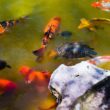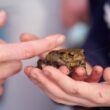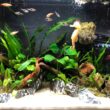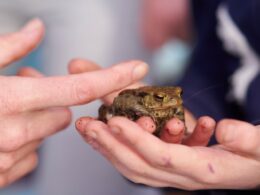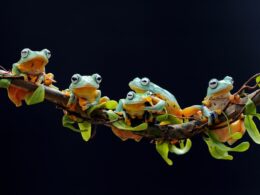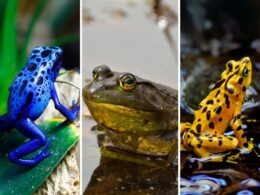In this article Show
If you’re like me, you’ve probably spent more time than you’d like to admit poring over reptile and amphibian books, marveling at these creatures’ fantastic diversity and charm. And yes, while I’ve had my fair share of experiences with various pets, something is fascinating about frogs.
Their unique behaviors, the soothing sounds of their croaks, and the myriad of colors and patterns they come in can captivate anyone.
But here’s the thing: Keeping frogs isn’t as straightforward as buying a bowl and some fish food. These little hoppers have specific needs that, when met, can make your frog-keeping journey incredibly rewarding. Through this guide, I’ll share insights and practical tips to help you navigate the world of pet frogs, ensuring they thrive in your care.
Whether you’re considering getting your first frog or looking to understand better the one you already have, you’re in the right place. Let’s dive in, shall we?
Why Keep Frogs as Pets?
Unique Behaviors and Characteristics
Frogs are not just regular pets; they’re a window into a world of mesmerizing behaviors and characteristics. Ever observed a tree frog sticking to the glass with those large, suction-cup-like toes? Or watched a dart frog display its vivid colors, warning potential predators of its toxicity?
And let’s not forget the amusing sight of a frog capturing its meal with a quick flick of its sticky tongue. There’s always something to learn and observe, and this dynamic aspect makes frog-keeping endlessly fascinating.
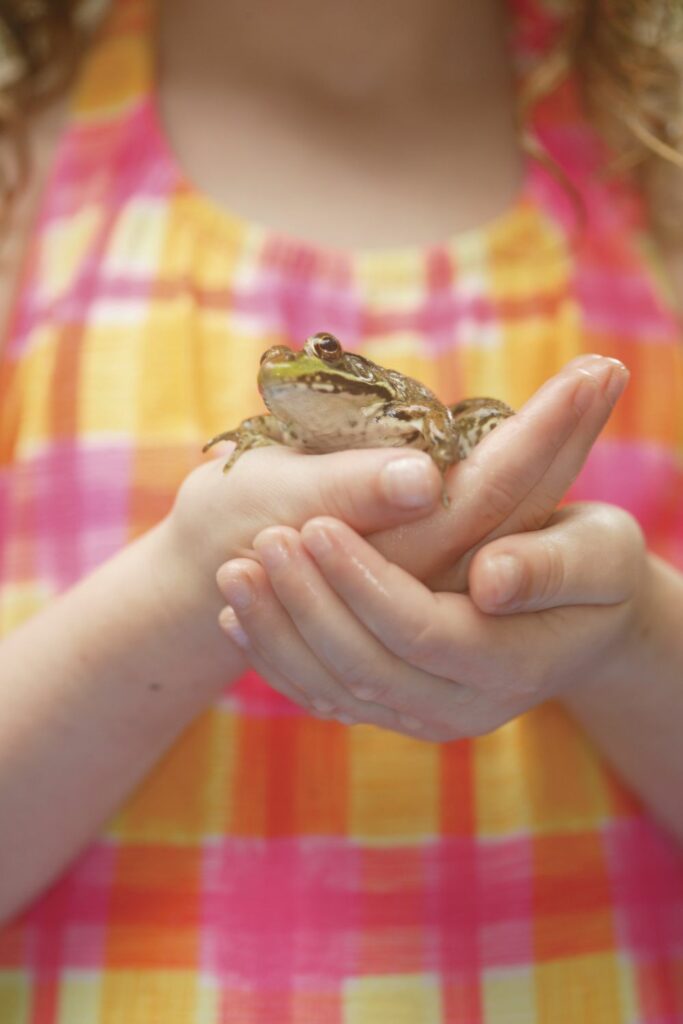
Educational Value for Kids and Adults
But it’s not just about the entertainment. Frogs serve as an excellent educational tool. For kids, they can be an introduction to biology, teaching them about life cycles as they watch tadpolesamorphose into frogs.
Adults, too, can benefit from understanding more about ecosystems, adaptation, and the delicate balance of nature. Plus, with the increasing concern about global amphibian declines, having a frog at home can ignite conversations about conservation and the environment.
Low-maintenance (depending on species)
Now, while some of you might be thinking of the intricacies of setting up a perfect habitat (and we’ll get to that), many frog species are relatively low-maintenance. Unlike dogs or cats, they don’t need daily walks or constant attention.
They’re content once you’ve got their environment set up correctly, with occasional checks and routine maintenance. But remember, “low maintenance” doesn’t equate to “no maintenance.” The key lies in understanding your specific frog species’ needs, which can vary considerably. But worry not; we’ll delve into those specifics later in this guide.
In Essence 🐸
Frogs offer a blend of visual appeal, educational insights, and the joy of caring for a creature that’s both intriguing and, in many ways, still mysterious. If you’re after a pet that’s a bit different, frogs might be the perfect choice.
Choosing the Right Frog for You
Different Species: From Tree Frogs to Aquatic Varieties
The world of frogs is vast and diverse. From the vibrant and arboreal tree frogs that gracefully leap between branches to the aquatic varieties that are content to float and paddle around in the water, there’s a species to suit everyone’s fancy.
However, this vast array of options means it’s crucial to research and understand which species best aligns with your living conditions, commitment level, and personal interest.
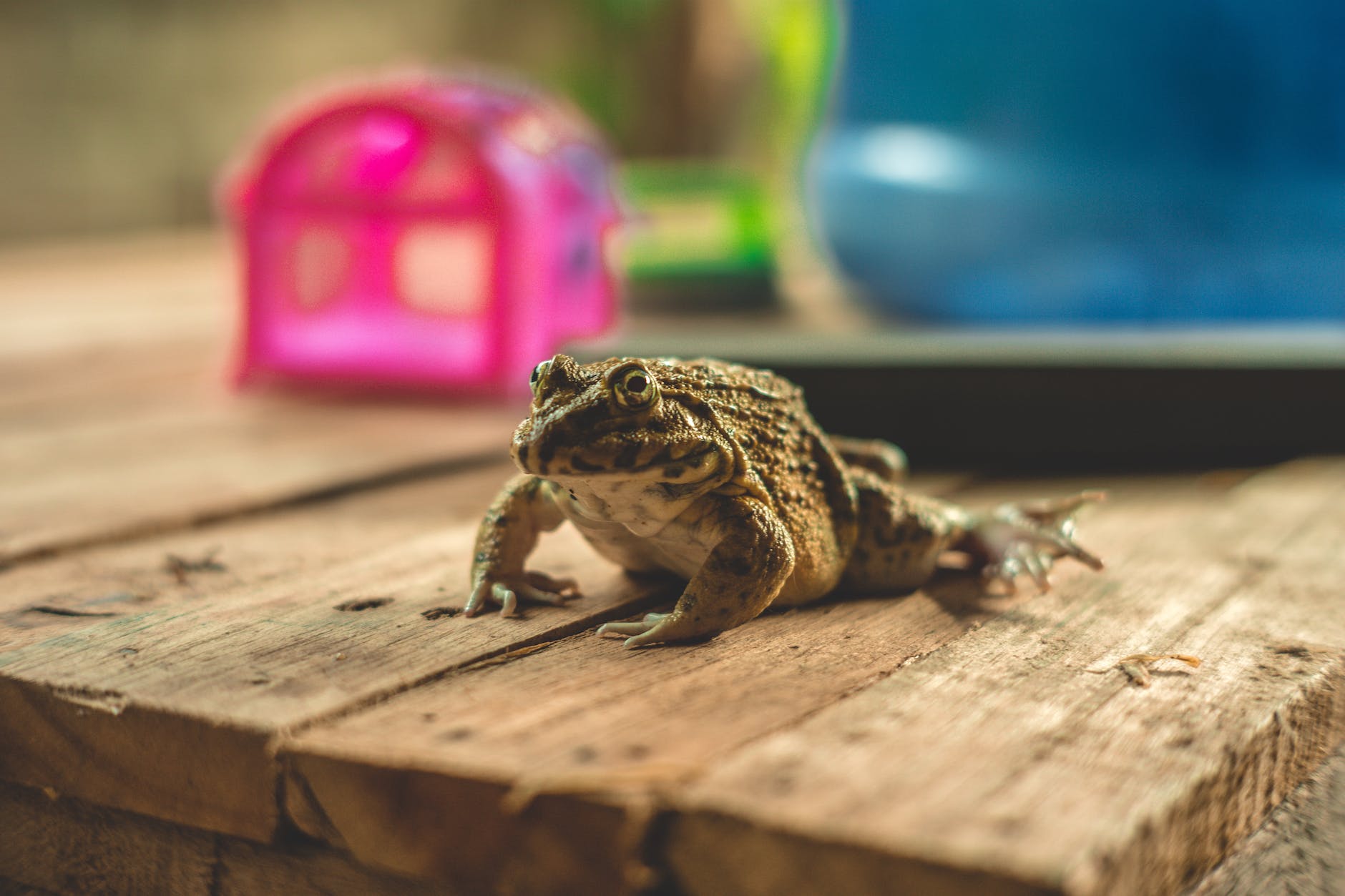
Lifespan, Size, and Care Needs of Popular Pet Frog Species
One thing to note is that not all frogs are the same regarding their care requirements. While some tiny species like the Reed frogs might only need a small terrarium, larger species like the African Bullfrog require significantly more space and a different setup. Moreover, the lifespan of these creatures can vary just as much.
Some frogs might accompany you for a mere couple of years, while others, like the Pacman frog, can be with you for over a decade! Therefore, consider how long-term your amphibious commitment is before making a choice.
| Popular Pet Frog Species | Lifespan | Size |
|---|---|---|
| Tree Frogs: (e.g., Red-eyed tree frog, white tree frog) | 5-10 years | Generally smaller, arboreal, |
| Dart Frogs (e.g., Blue dart frog, Strawberry poison dart frog) | 5-12 years | Small, colorful, require a humid environment |
| Aquatic Frogs (e.g., African dwarf frog, Clawed frog) | 5-15 years | Fully aquatic, need a good filtration system |
| Terrestrial Frogs (e.g., Pacman frog, Tomato frog) | 7-15 years | Ground dwellers, larger in size |
Importance of Avoiding Wild-Caught Specimens
While it might be tempting to go for that exotic frog species you stumbled upon during your vacation or at a less reputable pet store, resisting the urge is crucial. Wild-caught frogs can introduce diseases to your other pets, are often more stressed in captivity, and their removal can harm native populations.
Moreover, supporting the wild-caught pet trade can lead to unsustainable hunting and species endangerment. Instead, always opt for captive-bred frogs. They’re healthier and more adapted to life in captivity, and their purchase promotes sustainable pet ownership.
In Essence 🐸
Choosing the right frog is a mix of personal preference and commitment. But with some research and consideration, you can ensure that you and your amphibian friend have a happy and healthy life together.
Setting Up Your Frog’s Habitat
Choosing the Right Terrarium or Aquarium Size
The first and foremost aspect of setting up your frog’s new home is ensuring they have enough space. Size does matter in this case! Vertical space is essential for tree-dwelling frogs as they love to climb and jump. On the other hand, aquatic species need adequate water depth to swim and hide.
A general rule of thumb: always go a bit larger than you think is necessary when in doubt. This ensures your frog doesn’t feel cramped and has ample room to exhibit natural behaviors.
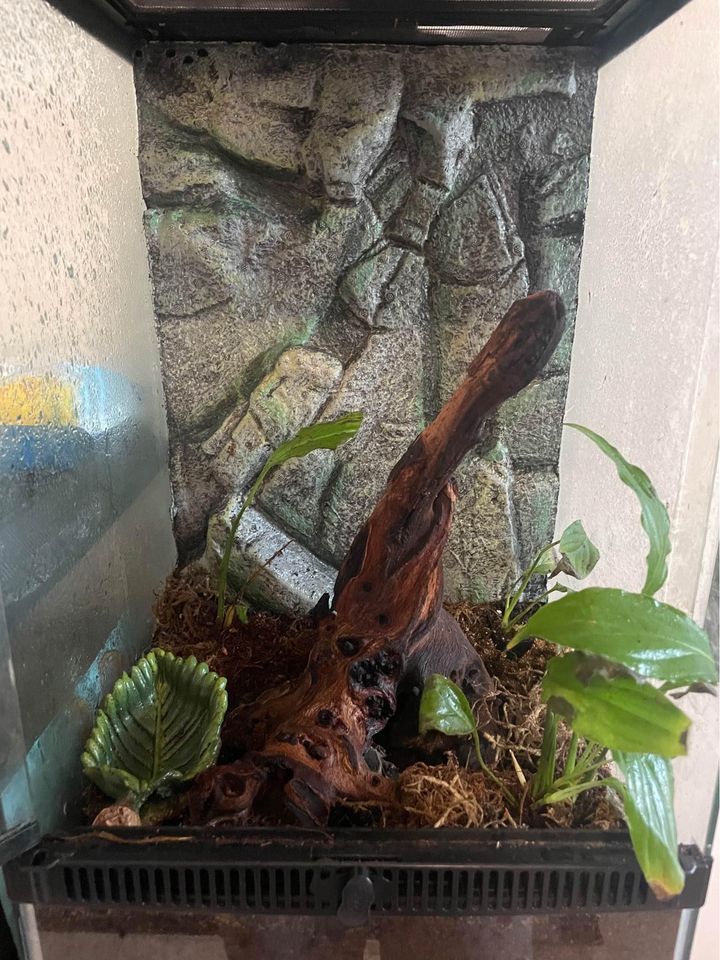
Importance of Climate Control: Temperature & Humidity
Frogs are ectothermic animals, relying on their environment to regulate their body temperature. As such, maintaining the right temperature is paramount. You might need a heating pad or lamp to keep your frog warm depending on the species. Always place thermometers in the habitat to monitor the temperature accurately.
But it’s not just about heat; humidity plays a significant role too, especially for tropical species. Using a hygrometer to measure humidity levels and misting the habitat with water can help in maintaining the right moisture levels. Some frog species might even require a full-fledged humidifier.
Substrate, Plants, and Decorations
The floor of your frog’s habitat is just as vital as its walls and roof. Depending on your frog’s natural habitat, you’ll want to select a comfortable substrate that mimics their wild conditions. Coconut fiber, moss, and bark are popular choices. A combination of smooth gravel and leaf litter works well for aquatic species.
Plants, both live and artificial, can provide hiding spots and contribute to the overall aesthetics of the habitat. Plus, they help maintain humidity. To ensure that any live plants you add are safe and non-toxic for your frog.
Decorations such as logs, rocks, and hides aren’t just for show. They give your frog places to explore, climb, and rest. For water-loving frogs, ensuring a clean, accessible water source is crucial.
Summary 🐸
Creating a comfortable, stimulating, and naturalistic habitat for your frog will make them healthier and provide you with a beautiful mini-ecosystem to observe and enjoy.
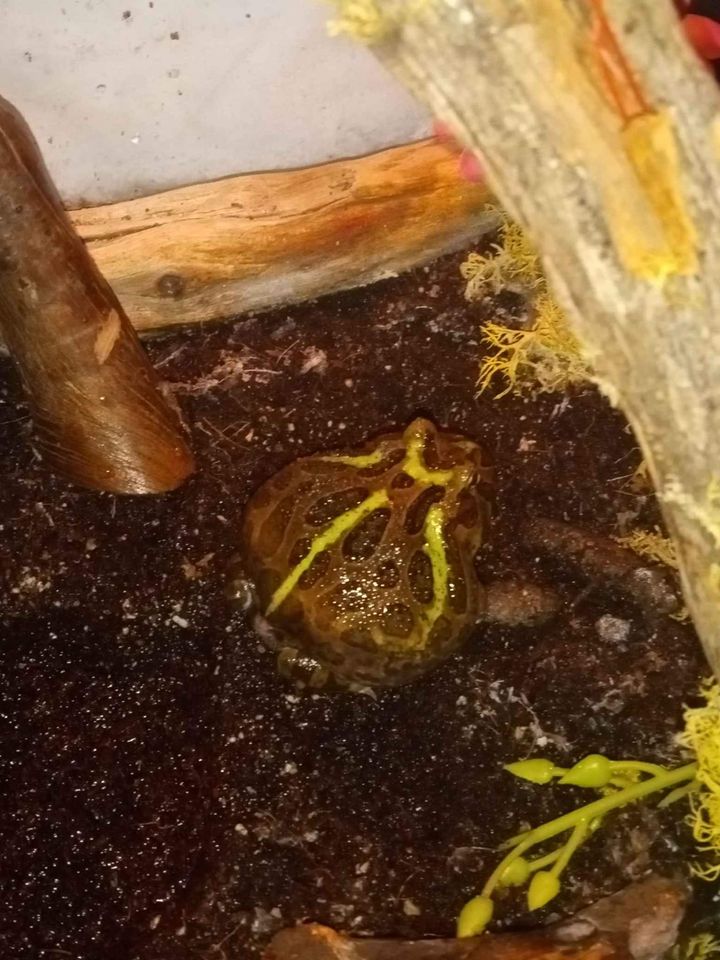
Diet and Nutrition
Keeping the habitat clean is non-negotiable. Regularly remove waste and uneaten food to prevent mold and bacteria growth. Depending on the setup, you might need to change the substrate every few weeks or months. For aquatic setups, water should be dechlorinated, and filtration systems must be in place to keep it clean.
The Variety of Food Options Includes Insects, Worms, and More
A frog’s diet is as intriguing as the creature itself. While many envision frogs solely feasting on flies, their palate is broader than you might think. Crickets are a staple for many species, but depending on the frog’s size and preference, their menu might also include mealworms, earthworms, silkworms, and even small feeder fish or pinkie mice for the larger species.
It’s essential to provide a varied diet, not just for nutrition but also for enrichment. Imagine eating the same food day in, and day out—it would get mundane! Similarly, mixing up your frog’s diet keeps them mentally stimulated.
How Often to Feed Your Frog
The feeding frequency largely depends on the frog’s species, age, and size. Young, rapidly growing frogs often require daily feeding, while adults might eat every other day or even once or twice a week for some of the larger species.
Always be observant. If your frog consistently leaves food behind, you might be offering too much. On the other hand, if they seem overly eager and rapidly gobble down everything, a slight increase in food might be in order.
Importance of Supplements like Calcium and Vitamins
While a varied diet is a great start, it might not provide all the essential nutrients your frog needs. This is where supplements come into play. Dusting food items with calcium powder prevents bone diseases, especially for growing frogs. Additionally, a multivitamin supplement can ensure a well-rounded intake of necessary vitamins.
Remember, though, not to go overboard. Over-supplementing can be as harmful as not supplementing at all. Depending on your feeding routine, a couple of times a week with supplements is usually sufficient for most species.
In Essence 🐸
Feeding your frog isn’t just about tossing in some insects. It’s about understanding their nutritional needs, ensuring variety, and making mealtime an enriching experience for them. You’ll have a healthy, active, and happy amphibian companion with the right diet and nutrition.
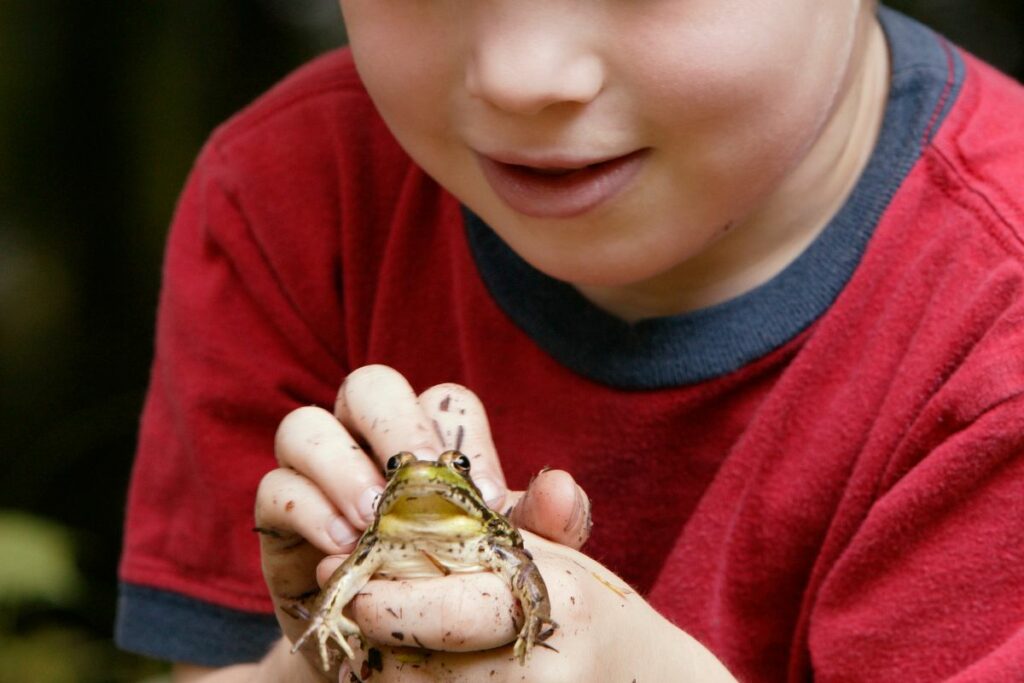
Handling and Interaction
Understanding That Many Frogs Prefer Minimal Handling
At the outset, it’s essential to know that frogs aren’t like traditional pets that might enjoy cuddling or physical interaction. Their delicate skin absorbs oils, chemicals, and contaminants easily, which means handling can stress or even harm them. While some species might tolerate occasional handling better than others, the general rule is that frogs are more for observation than interaction.
Safe Handling Practices
However, there might be times when you need to handle your frog—be it for habitat cleaning, a health check, or relocating them. In such cases, there are some best practices to ensure the safety of both you and your amphibian friend:
- Wash Your Hands: Before picking up your frog, wash your hands thoroughly to remove any contaminants. It’s a good idea to rinse well to ensure no soap residue remains.
- Wet Your Hands: Moisten your hands with dechlorinated water. This prevents the frog’s skin from drying out during handling.
- Gentle Touch: When you pick up your frog, be gentle. Avoid squeezing or holding them too tightly. Use a soft grip and let them rest in the palm of your hand rather than grasping them.
- Limit Handling Time: Keep the handling duration short. The less time they spend out of their habitat, the less stressed they’ll be.
- Return Safely: Place them back into their habitat gently, allowing them to move off your hand on their own.
- Wash Your Hands Again: After handling, always wash your hands. This ensures you remove any toxins or irritants on the frog’s skin.
Watching and Appreciating Their Behaviors
One of the true joys of frog ownership is simply observing them. You’ll be amazed at their range of behaviors when they feel safe and undisturbed in their habitat. From hunting techniques to unique calls, from intricate climbing maneuvers to fascinating social behaviors in species that can cohabit—there’s always something to see.
Setting up a comfortable chair near their habitat, maybe with a notebook, can turn into a delightful and relaxing observation session. Over time, you’ll start to recognize individual quirks and routines, deepening your bond and appreciation for your amphibious pet.
In Essence 🐸
While frogs might not be the kind of pets you interact with traditionally, they offer a unique, enriching experience. By respecting their space, handling them safely when necessary, and taking the time to observe, you can cultivate a rewarding and educational relationship with your pet frog.
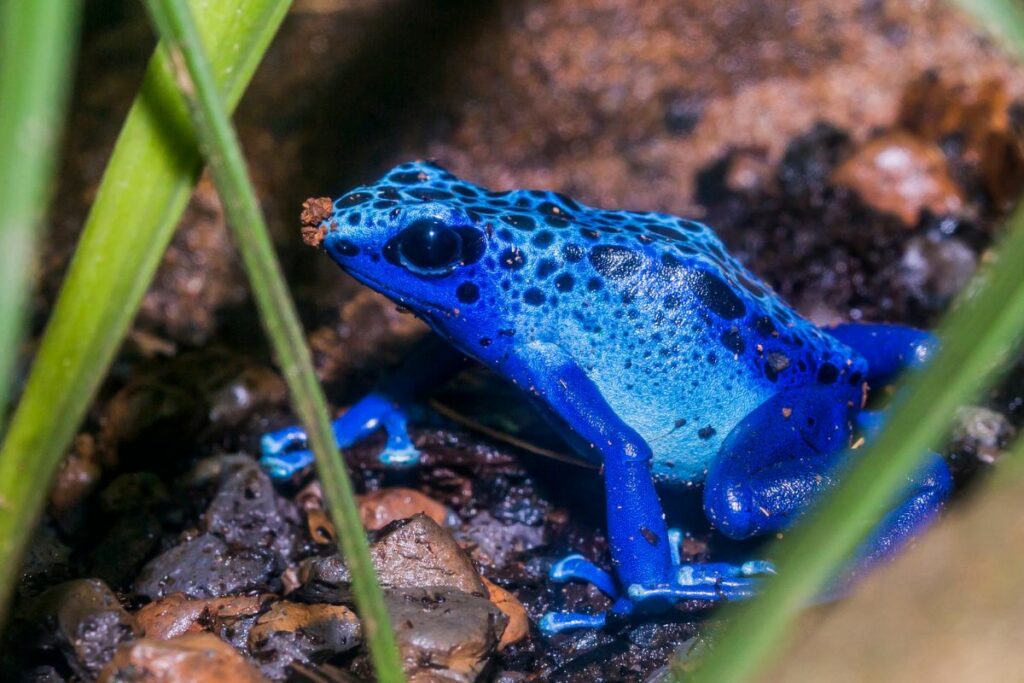
Health and Wellness
To ensure that your frog stays fit and healthy, here are some of the common diseases and conditions that can plague it.
Common Diseases in Captive Frogs
Like all pets, frogs are susceptible to various ailments, especially when their living conditions aren’t optimal. Some common diseases include:
- Red Leg Disease: Named for the reddening of the legs, it’s caused by bacterial infections and can be lethal if not treated early.
- Chytrid Fungus: A deadly disease affecting amphibians worldwide. It affects the skin, making it difficult for frogs to breathe or regulate water intake.
- Metabolic Bone Disease: Due to insufficient calcium or vitamin D3, this disease causes weak bones and deformities.
- Fungal Infections: Manifesting as white or gray patches on the skin, they are usually a result of poor water quality or incorrect humidity levels.
- Internal Parasites: Symptoms might include weight loss, lethargy, or abnormal feces. Regular fecal exams can help in early detection.
Regular Check-ups and Signs of Illness
While it’s not always feasible to have frequent veterinary visits for frogs, establishing a baseline health check-up with an exotics or amphibian vet is crucial. Periodic visits can help in early detection and treatment of potential issues.
At home, be vigilant. Monitor for signs of illness, which might include:
- Decreased appetite or refusal to eat
- Lethargy or reduced activity
- Abnormal skin coloration or texture
- Swelling or bloating
- Difficulty breathing
- Unusual behavior or posture
If you notice any of these signs or something seems “off,” it’s always better to consult a veterinarian.
Importance of Clean Water and Habitat Maintenance
A significant portion of health issues in captive frogs arises from suboptimal living conditions. Clean water is paramount, especially for aquatic species. Contaminated water can quickly lead to fungal and bacterial infections. Ensure water is dechlorinated, and if you’re using tap water, treat it with amphibian-safe water conditioners.
Habitat maintenance, too, cannot be overstated. Regularly remove waste, uneaten food, and moldy substrate. Ensure proper humidity levels to prevent skin issues and respiratory distress. A well-maintained habitat doesn’t just reduce disease risk—it actively promotes wellness and longevity.
Key Takeaway 🐸
Frog health and wellness balance proactive care, keen observation, and swift intervention when needed. Ensuring optimal living conditions and being attuned to your frog’s behavior can pave the way for your amphibian companion’s long, happy life.
Conservation And Ethical Considerations
Understanding the Impact of the Pet Trade on Wild Populations
The allure of exotic pets, including frogs, has led to increased demand in the pet trade. Unfortunately, this often translates to over-harvesting from wild populations, leading to ecological imbalances and even pushing some species closer to endangerment or extinction.
Removing amphibians from their natural habitats affects their numbers and can disrupt food chains and local ecosystems. Furthermore, animals caught in the wild often suffer from stress, disease, or injury during capture and transport.
Supporting Captive Breeding Programs
One way to mitigate the negative impact of the pet trade is by supporting and promoting captive breeding programs. Captive breeding can:
Buying captive-bred frogs reduces demand for wild-caught animals, indirectly aiding conservation efforts.
- Promote Healthier Pets: Captive-bred frogs are generally healthier, free from parasites common in wild populations, and better adapted to life in captivity.
- Contribute to Species Survival: Some programs focus on breeding endangered or threatened species, potentially aiding in their survival and future reintroduction into the wild.
When considering buying a frog, always inquire about its origin. Choose breeders or sellers who prioritize ethical sourcing and are transparent about their practices.
Responsible Pet Ownership
Owning a pet, especially an exotic one, comes with responsibility. Here’s how you can be a conscientious frog owner:
- Commit Long-Term: Understand the needs and requirements of the species you’re interested in. This ensures that you can provide a suitable environment and care. Many frogs have lifespans spanning several years. Ensure you’re ready for this long-term commitment.
- Avoid Releasing Pets: If for any reason you cannot keep your frog, never release it into the wild. It can introduce diseases or become an invasive species. Instead, look for responsible rehoming options or contact local herpetological societies.
- Stay Updated: Conservation statuses and ethical considerations can change. Stay informed about your species and the broader topic of amphibian conservation.
In Essence 🐸
The decision to own a frog shouldn’t be taken lightly. Beyond the immediate care needs, broader ethical and conservation considerations are at play. By making informed decisions, supporting ethical practices, and committing to responsible pet ownership, you can enjoy your amphibian friend’s company while also positively impacting the larger ecosystem.
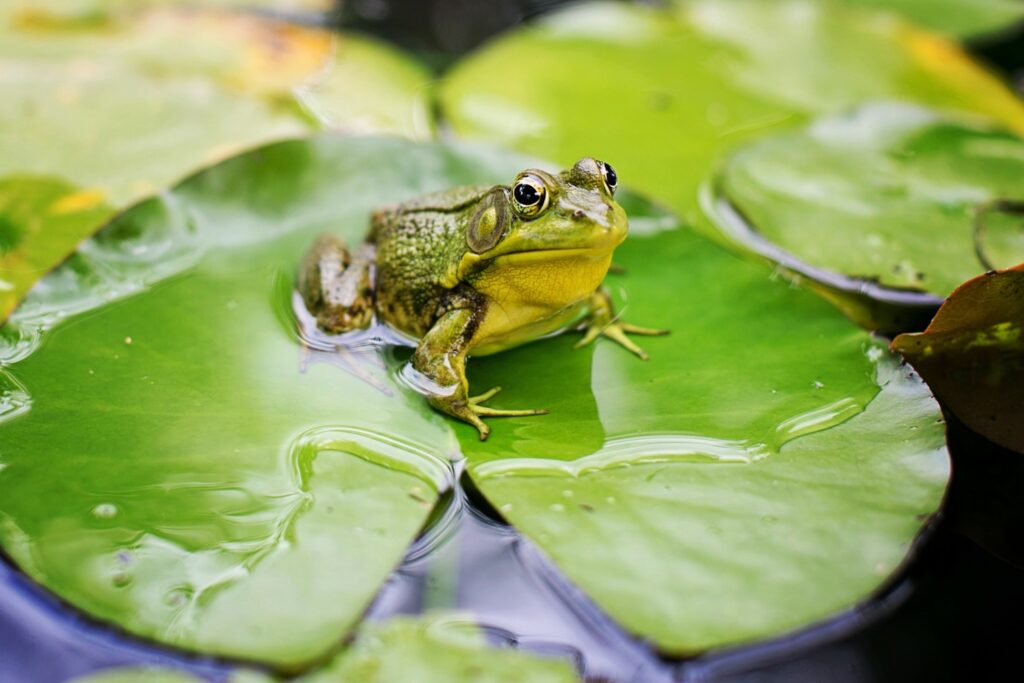
Frequently Asked Questions
How long do pet frogs live?
The lifespan of pet frogs varies greatly by species. While some smaller species might live for 5-10 years, others, especially larger species, can live for 15 years or more in captivity with proper care.
Can I handle my frog every day?
Most frogs prefer minimal handling, as their skin is delicate and can absorb harmful substances. It’s best to handle them only when necessary and always ensure your hands are clean and wet with dechlorinated water.
Do frogs make noise at night?
Many frog species are nocturnal and might vocalize during the evening or night. The volume and frequency depend on the species, with some being quite loud, especially during mating seasons.
What do I do if my frog looks sick?
If you notice signs of illness or abnormal behavior, it’s essential to consult with a veterinarian experienced with amphibians. Early intervention can make a difference in the outcome.
Can I keep different species of frogs together?
Co-habitation depends on the species. While some frogs might coexist peacefully, others can be territorial or have different habitat needs. It’s essential to research compatibility before introducing multiple species.
How often should I clean my frog’s habitat?
Routine maintenance should be done regularly, such as removing waste and uneaten food. Depending on the setup and species, a more thorough cleaning, including substrate change, might be needed every few weeks to months.
Can frogs recognize their owners?
While frogs don’t recognize owners like mammals, they can associate you with feeding times and might become more active or alert when you approach their habitat.
Is it ethical to own a frog?
Owning a frog can be ethical when the amphibian is sourced responsibly (preferably from captive breeding programs) and provided with proper care. Additionally, being informed about conservation and supporting conservation efforts can make pet ownership more ethically sound.
What should I do if I can no longer care for my frog?
If circumstances change and you can’t care for your frog, never release it into the wild. Instead, consider rehoming options, contact local herpetological societies, or consult with veterinarians or breeders for advice.
Do frogs need companionship?
Companionship needs vary by species. While some frogs are social and might thrive with others of their kind, others are solitary and prefer to be alone. Always research the specific requirements of your chosen species.
Conclusion
Owning a frog as a pet is a unique experience that brings joy, wonder, and responsibility. Their intricate behaviors, mesmerizing colors, and the soothing ambiance of their habitats make them a captivating addition to any home. But beyond the aesthetic pleasure, there’s a deeper reward that only pet owners, especially those who venture into the world of amphibians, can truly understand.
Keeping frogs offers a window into the natural world, a slice of the wild brought right into our living spaces. Every croak, leap, and feeding moment is a testament to our planet’s rich tapestry of life. It’s not just about observing these creatures but understanding and appreciating the delicate balance of ecosystems and the intricate web of life.
Moreover, frogs present a lifelong learning opportunity. Their care, while straightforward in many aspects, does require a keen sense of observation and adaptability. As seasons change, as they grow, or as their behaviors evolve, you’ll find yourself continually adapting and learning. The research doesn’t stop after setting up their initial habitat; it’s a continuous journey of discovery.
From understanding their dietary needs to tweaking their habitats, from diving deep into species-specific behaviors to broader conservation and ethical considerations, every aspect of frog ownership becomes a lesson. For those who embark on this journey with kids, it’s an invaluable educational experience, fostering respect for nature, understanding of biology, and the responsibilities of pet ownership.


